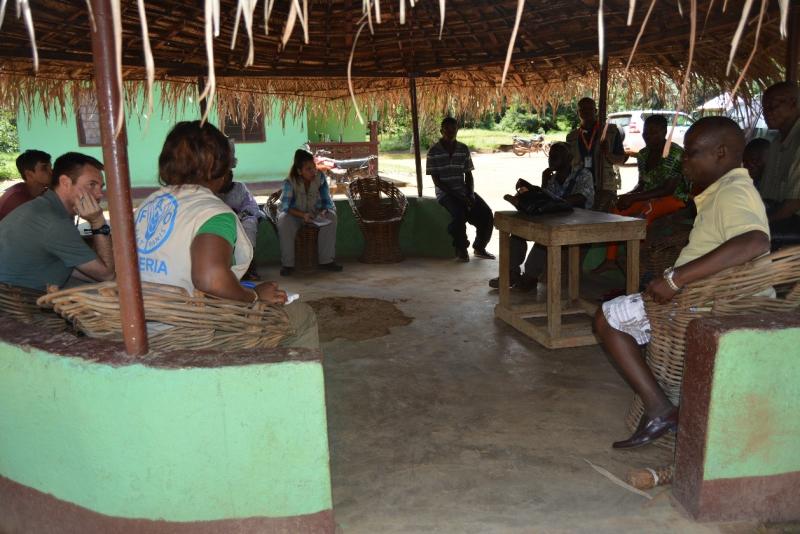
Enhancing multi-sectoral disease surveillance – Updates on FAO’s 2018 activities
November 14, 2018
In light of recent outbreaks of zoonotic diseases, strong inter-sectoral surveillance networks are essential to identify potential threats from animal origins prior to their spillover into humans.
Capacity-building efforts from many organisations have increased national abilities to respond to such events. However, veterinary services and surveillance systems for priority animal diseases often lag behind their public health counterparts. These gaps cause countries to be ill-prepared against future epidemics of a zoonotic origin, and prevent them from reaching their full surveillance capabilities under the Global Health Security Agenda (GHSA).
With its high number of veterinary personnel stationed across many countries, the Food and Agriculture Organization of the United Nations (FAO) is in a unique position to engage national governments and local partners and improve surveillance of animal/zoonotic diseases. In addition, the Tripartite collaboration between FAO, the World Organisation for Animal Health (OIE) and the World Health Organization (WHO) has cemented the application of One Health strategies to capacity-building efforts.
During 2018, FAO and its partners engaged in several activities to enhance surveillance of animal/zoonotic diseases globally.
Technical backstopping – Situation updates and qualitative risk assessments
The zoonotic nature of many significant epidemics have prompted the need for an analytical appraisal of the role animals play in the epidemiology of these diseases. To address this, FAO recently produced qualitative risk assessments for key high-impact zoonotic diseases. In August 2018, the organisation released an update to its risk assessment for the likelihood of human exposure to Zaire ebolavirus from animals or animal products and examined the recent pan-African spread of H5N8 highly pathogenic avian influenza (HPAI) in a Focus On entitled 2016–2018 Spread of H5N8 HPAI in sub-Saharan Africa: epidemiological and ecological observations. Likewise, new information on transmission of H7N9 highly and low pathogenic avian influenza became available and was incorporated in an updated assessment on Chinese-origin H7N9 spread in poultry and human exposure published in February 2018.
These in-depth assessments supplement FAO’s regular updates on major on-going disease situations, such as HPAI (Sub-Saharan Africa, H7N9 and H5N8) and Middle-Eastern respiratory syndrome coronavirus (MERS-CoV). Data from many sources, including OIE, WHO, national ministries and primary literature articles are compiled to produce these updates on a monthly basis.
Information from both risk assessments and disease updates are shared with governments and technical partners to assist decision-making for adapted disease surveillance and response plans.
Evaluation for action – The Surveillance Evaluation Tool (SET)
SET was developed in response to a request by African countries in phase 1 of the GHSA for a methodology to specifically evaluate and improve animal disease surveillance systems. The tool consists of a comprehensive assessment completed after interviews with stakeholders at all levels of the network. Aspects of inter-sectoral collaboration are included through meetings with representatives from ministries of health and the environment. The final output consists of a 360-degree representation of a surveillance system’s strengths and weaknesses along 90 indicators. These results are then used to develop a locally-relevant action plan for improvement. To date, 13 countries in West, Central and East Africa have conducted SET evaluations and reports approved by the national veterinary services are being posted on the project’s webpage. Results from the assessments can provide insight on major strengths and weaknesses of national animal disease surveillance systems and guide technical and financial partners’ capacity-building efforts towards reinforcing the animal component of integrated surveillance systems.
Creating partnerships at a national level – The Joint Risk Assessment (JRA) tool
Under the leadership of the Tripartite, the JRA tool was developed and pilot tested for the first time in March 2018 in Indonesia. The aim of the tool is to provide a strategy for multisectoral risk assessment of threats from zoonoses at the human-animal-environmental interface, bringing together national experts from the different fields. In October 2018 a facilitator training was conducted at FAO headquarters to kick start further field-testing of the tool on a wider scale. Formalising multisectoral responses to risks associated with zoonotic diseases is essential for the development of coordinated national surveillance and response plans for targeted diseases.
Tackling the MERS-CoV enigma – Camel sampling in four countries in East Africa and the Middle East
The zoonotic origin of MERS-CoV is now widely accepted by experts, as viruses found in camels in the Arabian Peninsula could be linked to those isolated from human cases. While MERS-CoV antibodies have been found in camel populations of both the Arabian Peninsula and north-eastern Africa, human cases are not documented in Africa to date. During 2018, surveillance studies conducted by FAO in Egypt, Ethiopia, Jordan and Kenya have sampled dromedary camels at different steps of the value chain in an attempt to gain more understanding of the role this species plays in transmission of the virus. Results of this project are undergoing analysis and outcomes will help complete the picture of MERS-CoV epidemiology by contributing to the knowledge base and aiding in the development of efficient strategies to reduce human risk.
Conclusions
Although considerable progress has been made to prepare countries for the next zoonotic pandemic, gaps remain. For example, a major finding from multiple SET missions was the need to reinforce field agents’ means to investigate and follow-up on reports of sick animals. As FAO continues to address these challenges, partnerships with national governments, WHO, OIE, and the United States Agency for International Development (USAID) and other donors remain essential to build integrated surveillance systems that fully incorporate the veterinary sector.